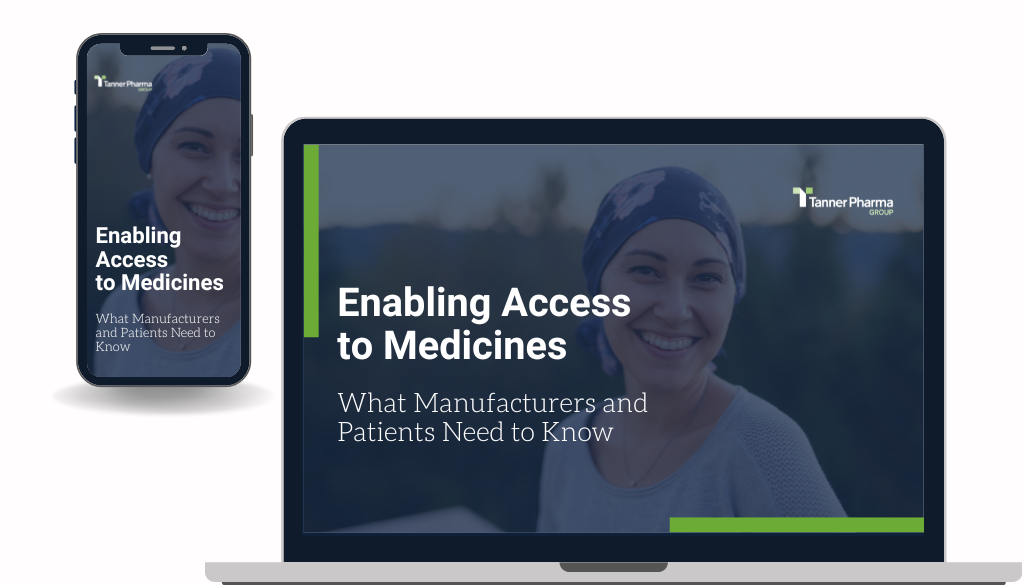Early access programs: how real-world data capture helps regulatory approval
While clinical trials can prove that a medical product is safe and effective in a controlled environment, the vital data for how a new medicine will perform in the real world is often lacking. Learn more about the connection between real-world data capture and early access programs, and the role this plays in the approval of life-improving medicines.

Real-world data (RWD) capture is becoming increasingly important in pharmaceutical decision-making. Manufacturers and physicians are using RWD to gain a better understanding of how patients respond to treatments outside of the clinical trial space. Additionally, regulators are more widely accepting RWD as evidence of the safety and effectiveness of new drug applications.
Clinical trials may prove the safety and efficacy of a medicine in strict conditions, yet there may be little indication of how patients will respond to treatments in their day-to-day lives when exposed to a wider variety of factors. Patient traits and behaviors can also influence health outcomes, and data capture in a real-world setting can help researchers identify responses to a medicine or vaccine across a more diverse, less restricted population.
Early access programs (EAPs) can be a beneficial alternative for manufacturers in collecting this vital data. The primary purpose of EAPs is to treat patients with unmet clinical needs by providing access to life-improving or life-saving medicines before their national regulatory authorities have approved the products. Historically, effectiveness data was not collected in these programs as it was outside the clinical trial space.
Now providers have started to see the value in gathering this information where they can before the medicine has been approved by regulators and had its commercial launch. Through RWD capture, companies can build a significantly larger data profile of a new medicine before commercial release, especially in the case of a rare or ultra-rare disease.
Tanner Pharma Group is an established provider of early access programs that allow patients with life-threatening illnesses to receive medical treatments globally, even in countries with limited healthcare infrastructure. John Lagus, Executive Vice President of Business Development, is a strong supporter of using RWD from EAPs to learn far more about new innovative medicines and accelerate regulatory approval, ultimately benefiting more patients.
“Especially in the case of a rare or ultra-rare condition, the patient population is extremely small. Any data point is potentially very valuable,” says Lagus. “There’s strong justification for companies to consider capturing patient data through an early access program.”
Supporting regulatory approval
Pharmaceutical researchers have utilized real-world data for years to show the impacts of medicines and vaccines on patients in day-to-day settings. However, recent advances in technology, greater demands from patients and physicians, and increasing regulatory acceptance, have enabled pharma companies to embrace RWD even more and lean on the resulting evidence to inform decisions. AstraZeneca, Novartis, Pfizer, Eli Lilly & Company, Johnson & Johnson and others are leveraging RWD and evidence to better understand safety and effectiveness, measure outcomes against models and other patient populations, predict disease progression, and ultimately help ensure the right medicines are getting to the right patients.
2020 saw the publication of a paper titled Use of Real-world Data for New Drug Applications and Line Extensions, written by Winona R Bolislis, Myriam Fay, and Thomas C Kühler from Sanofi’s department of research and development. The paper looked at new drug treatments seeking regulatory approval between 1998 and 2019 from either the US FDA, European Medicines Agency, Health Canada, or the Japanese regulator the Pharmaceuticals and Medical Devices Agency. Of the 17 cases that used RWD, all 17 obtained approval from their respective regulator.
Early access programs are also playing a role in the RWD evolution. While RWD from EAPs is commonly used to support results from clinical trials and bolster new drug applications, in some instances it is replacing primary data as the lead evidence presented to regulators.
In a recent study, Tobias B Polak and others looked at approvals from the FDA over 1955-2018 and the EMA over 1995-2018 to ascertain how commonly early access data was included in submissions for regulatory approvals. A total of 187 approvals referred to early access information. In 39 approvals, early access data was used as evidence for efficacy.
Similarly, from 1993 to 2018, early access data made up the bulk of approval evidence in 13 instances. Out of these cases, four of the approvals were based solely on efficacy data coming from early access. Six treatments were approved solely by the FDA, two approved solely by the EMA, and five were approved by both the FDA and EMA.
Future value of real-world data
Patients are driving the need to gain faster access to investigational medicines. With the ability to access more information about therapies in development than ever before, patients requiring treatment are actively seeking and often becoming aware of new medicines before their physicians.
The amount of global access programs is only predicted to rise in the future, alongside the growing number of new medicines developed. And capturing RWD in early access programs, especially for rare disease treatments, is of significant value.
“Certainly, in the rare disease space, there has been a number of instances where data from an efficacy perspective has been either supportive or used as the primary data coming from early access,” explains Lagus.
“For manufacturers, there is certainly the altruistic patient benefit of a trying to change or save their life, but then there are also other benefits for the company.”
The future of real-world data and evidence is strong. As global healthcare continues to shift and unprecedented challenges arise, enabling data capture through new and innovative pathways will help better support patients and enhance global health equity.
Free Whitepaper
Enabling Access to Medicines: What Manufacturers and Patients Need to Know
Early Access Programs (EAPs) are a pathway for pharmaceutical companies to provide innovative drugs to patients living with serious conditions. These treatments may still be in development or already have approval somewhere in the world. This white paper provides an overview of the key information drug developers and patients need to know about access programs and touches on the role Tanner Pharma Group plays in enabling global access to critical medicines. Download now.
